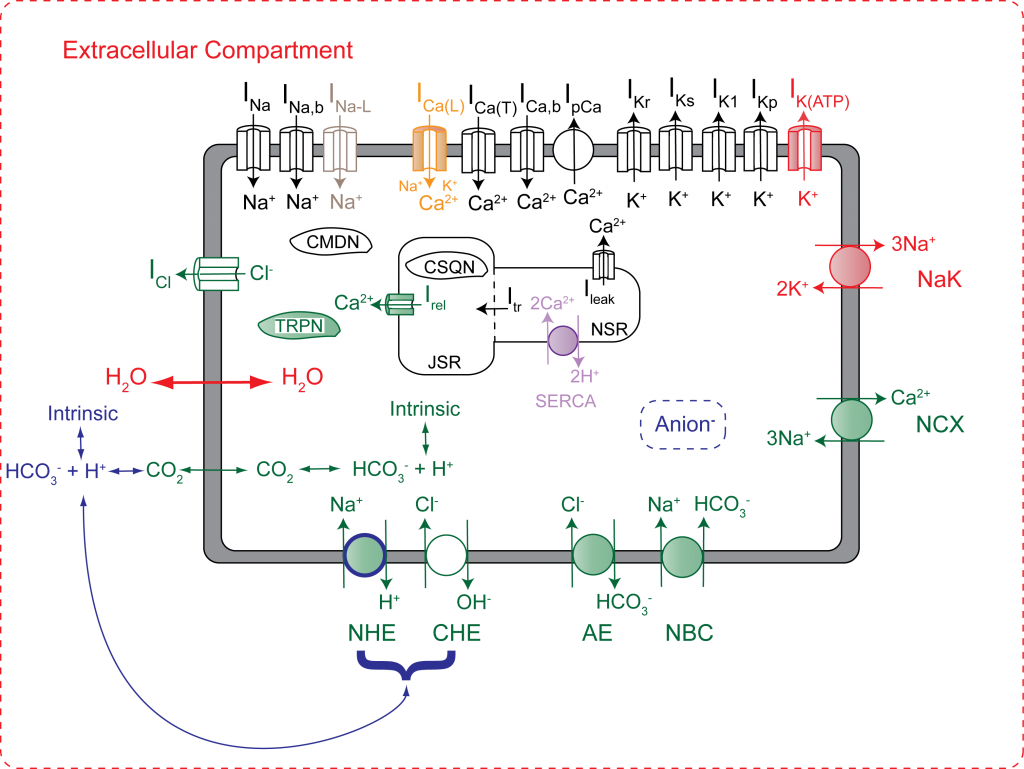
Schematic diagram detailing the components of the Roberts-Christini guinea pig ventricular myocyte ischemia-reprefusion model. Shaded regions indicated components that are regulated by pH and/or phosphometabolites.
The Roberts-Christini model is a mathematical guinea pig ventricular myocyte model developed to study ischemia and reperfusion in cardiac cells. Myocardial ischemia, commonly observed when arteries supplying the heart become occluded, results when cardiac tissue receives inadequate blood perfusion. In order to minimize the amount of cardiac damage, ischemic tissue must be reperfused. However, reperfusion can result in deleterious effects that leave the heart muscle sicker than if the ischemia had been allowed to continue. Examples of these reperfusion injuries include lethal arrhythmias and an increased region of cell death. Some of the early events that result in reperfusion injury include changes in pH and an overload of sodium inside the cell. During reperfusion, the sodium-proton exchanger (NHE) removes protons from the cell in an effort to restore normal pH, in turn importing sodium ions. Many strategies have been attempted to prevent reperfusion injury, including inhibition of the NHE, with little clinical effect. Using the model, we found that NHE inhibition produces more severe sodium overload, largely due to adverse consequences of the delayed pH recovery produced by NHE inhibition. These results suggest that NHE inhibition alone may not be a viable strategy, and that therapies which prolong intracellular acidosis may be problematic.
Source code and compile instructions can be found here.
“NHE Inhibition Does Not Improve Na+ or Ca2+Overload During Reperfusion: Using Modeling to Illuminate the Mechanisms Underlying a Therapeutic Failure,” PLoS Comput Biol, 7(10): e1002241 (2011).